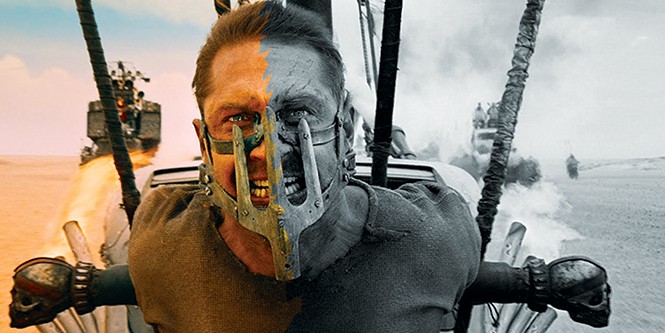
- Mad Max: Fury Road
What if—just humor me—what if a director's ideal vision for what a movie might have been isn't actually a version I want to see?
I found myself wrestling with this notion recently, after fans of Mad Max: Fury Road—a movie I love—responded to comments made by director George Miller that "the best version of this movie is black and white, but people reserve that for art movies now." A Change.com petition was launched, requesting that distributor Warner Bros. release not just a black & white version of Fury Road, but also a "silent version" which includes no dialogue. (Neither version appeared on the recent DVD/Blu-ray release of the movie.)
And my immediate response, via Twitter, was as follows: "No. This is a terrible idea."
Rather quickly, I was challenged. Why wouldn't I want to see a version of the movie as the director intended? Why wasn't his original vision deserving of a public airing?
It's here that I'm forced to admit a dark secret of my cinephilia: I really don't like supplemental material on home-video releases. I don't listen to commentary tracks, or watch "behind-the-scenes" featurettes. I don't watch "alternate endings." And I don't give a rat's ass about "director's cuts" or "unrated versions."
Mine is something of an outlying position, based (at least in part) much more on gut than reason. The commentary-track part is simplest: As far as I'm concerned, a great artist says all she or he needs to say about a work in the work, and a bad artist can't tell me anything that makes it better. "Making-of" features assume that I want to have the magic of creation affected by looking behind the stage curtain. As for "alternate endings," I'd argue that a movie with more than one ending doesn't actually have an ending. If the story isn't leading up to one, and only one, possible outcome, it needs a re-write.
But the "director's cut" part is trickier, since it flies in the face of the way movie lovers treasure the notion of an auteur's pure, unsullied vision over commercial compromises, demanded by everything from the MPAA ratings board to studio executives. History has been full of lost or near-lost masterpieces as the result of directors engaged in losing battles with those in positions of power: Erich von Stroheim's Greed. Orson Welles' The Magnificent Ambersons. Terry Gilliam's Brazil. All have become standard lessons in the terrible things that can happen when Philistines in suits stick their noses into the work of artists.
I get it. What film historian wouldn't want to see those lost reels of Greed, or Welles' version of Ambersons? But I'm not a film historian. I'm someone who explores the text in front of me and tries to make sense of what I find. And I've made peace with the fact that film is a collaborative medium, which almost inevitably involves compromise. There's not enough time, or there's not enough money, or there's not enough creative autonomy. It's always, or at least almost always, something.
We have seen, particularly in the era of home video, the desire on the part of filmmakers to show us the movie they had in their head before that "something" happened. Some of these revised versions have become legendary, or maybe infamous: Ridley Scott's Blade Runner without Harrison Ford's narration and the "happy ending"; Francis Ford Coppola's Apocalypse Now Redux; Steven Spielberg's gun-free, digital-effects-added cut of E. T. the Extra-Terrestrial; and, of course, George Lucas' "special editions" of the original Star Wars trilogy. Some viewers are frustrated with these alterations, some viewers are fine with them, but most viewers at least want to see whatever it is that allows the director to say: "This. This is what I wanted you to see."
Me, I'm just foolish—and, I suppose, stubborn—enough to think that the constraints and restrictions of a collaborative, commercial medium mean that you accept the compromises. The version of a movie I see for the first time—often, but not always, in a theater, given my job—is the version with which I'll engage. If you're a director, and you don't understand that the work will likely be sent out into the world in a way different from that movie in your head, you're probably in the wrong business. In subtle ways, we're being told over and over again that the movie initially released to the world is basically a dress rehearsal for the real thing, once the DVD release is available. If so, why bother going to the movies?
The question of a text's "definitive version" is a messy business, and I'm not about to provide the final word. But I know what my version of a text is. It's the version I shared in the dark with an audience, and wrestled with, trying to put into words the way I understood it. For me, Mad Max: Fury Road involves magnificent use of shifting color tones, and it always will. With all due respect to George Miller, the question of whether or not he gets the last word is far from black-and-white.